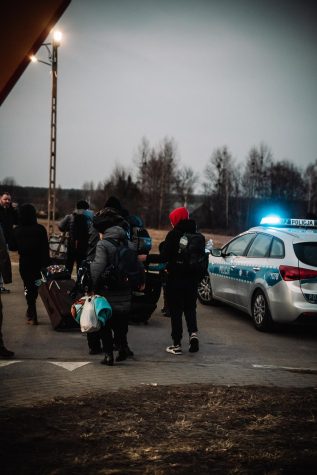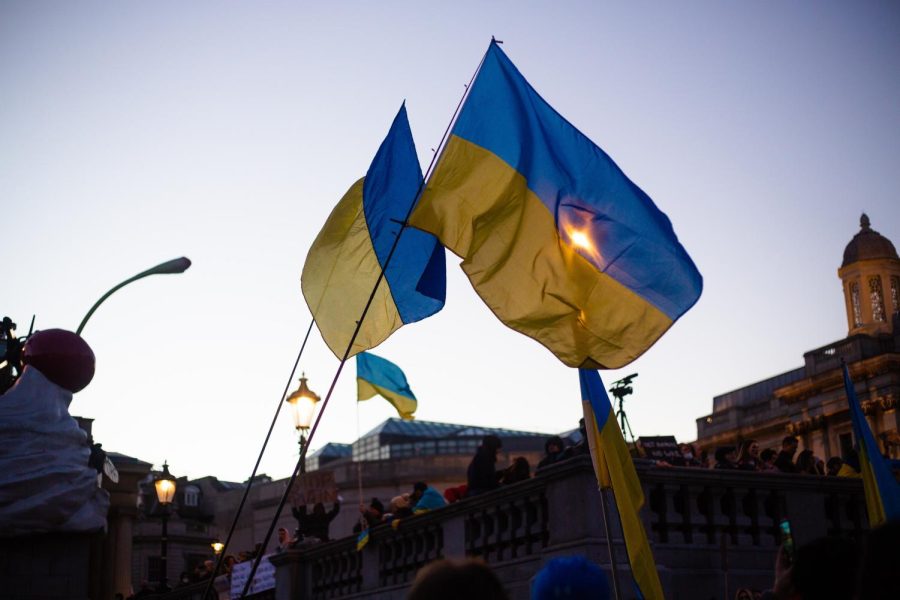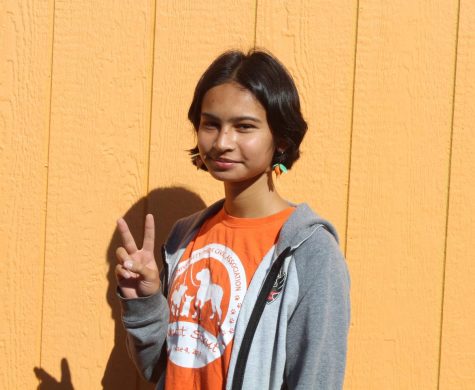The Impact of War on Ukrainian Teens
April 27, 2022
In the first week of March, the Kyiv Passenger Railway station shuffled thousands of women, children and elderly in, and out of the city. Many sported thick coats, scarves, hats, and gloves to stay warm in the bitter winter, and in the dense crowd people often stood coat-to-coat. Held tightly were carefully packed necessities – little room for personal comforts – in suitcases, duffel bags, and backpacks. People waited expectantly for the next train, while saying their goodbyes to the fathers, brothers, and uncles who will soon go to war.
On February 24, following increasing tensions between Ukraine and Russia for the past 8 years, Russia launched a full-scale invasion of Ukraine, causing millions of Ukrainian citizens to flee their country or prepare to defend it. Out of the more than 10 million refugees from Ukraine, 4.3 million are children under the age of 18, based on BBC and UNICEF reports. A few months ago, Ukrainian teens would have never predicted that their home would become a warzone. Instead of attending highschool, hanging with friends, going to movies, going out to eat, riding bikes, driving, and playing sports, many teens in Ukraine have had to adjust to the tough reality of the War on Ukraine.
“I would have been in class,” said Sasha Bondar, 17, on CBS News. “Honestly, I miss school. [To] all the American teenagers, please enjoy school. It’s not that bad, trust me.”
Sasha described her life, as of March 10th, living in an occupied town in Eastern Ukraine. “I am frightened because I really don’t know what’s going to happen tomorrow. But I tried not to think about it… I enjoy reading, so that probably keeps me out of my bad thoughts. But yeah, mentally it’s really exhausting, because [when you go to sleep] you don’t know what you are going to wake up to.” She remarked that her family was prepared to leave the country at a moment’s notice, but was unsafe due to Russian forces opening fire on civilian cars driving out of her city.
Millions have fled the country, especially in dangerous areas around the capital Kyiv and other major cities, while others remain in Ukraine, living at home or in bunkers under constant threat of bombs and short supplies. Neighboring countries like Poland, Slovakia, Czech Republic, Moldova, and Hungary welcome incoming refugees with warm hands, and provide them with housing, hygiene, food, and education. According to the Washington Post on March 20th, the Polish education system expected as many as 700,000 Ukrainian students – around the population of all students in Los Angeles – to be enrolled in Polish school.
However, for young men who fall inside the 18-60 age draft, it’s a completely different story. In a matter of weeks, teen boys were required to say goodbye to their family, enlist in the military, and prepare to defend their home. On March 12th, BBC News documented a group of college students in their preparation for the military. Maksym Lutsyk, 19, and Dmytro Kisilento, 18, studied biology and economics. Both had no prior experience with a gun, yet within three days, Maksym and Dmytro have had to learn how to use a gun, change out their regular clothes for a military uniform, and move to a military camp. Maksym comments that he is not very scared but “it’s human nature to feel scared and of course deeply in my soul I feel a bit scared, because no one wants to die, even if it’s for your country.” Valeria, a Ukrainian photographer and TikToker, posted on March 30th about the death of her 18 year old brother. She captioned, “I can’t stop [crying]. I don’t wanna believe in it.”.
Now, in April, the war continues to devastate Ukraine. Many key areas of Ukraine – like the southern port city Mariupol, with a population of over 446,000 Ukrainians – have been captured by Russian forces. People living in captured areas are trapped in, often, an active warzone, and may have to live in bunkers. Teens are not able to attend school and, depending on how dangerous the city is, have easy access to necessary food and supplies. Teens that now reside in foreign countries are able to attend school and find a safe place to stay. In Poland, according to France24, 54,000 Ukrainian students are enrolled in school. Students are taught by Ukrainian teachers who have also fled the country. Classes offer a sense of normalcy and provide support for students. Yet most students are now behind on their studies, and are a year or two behind their Polish peers. Many teens have also left family and friends in Ukraine. Alla Renska, a 17-year old living in Hungary, said on CNN, “It’s unfair. It’s so unfair. They should be here.”
Both the refugees and soldiers of Ukraine show incredible strength and courage during a senseless war. Ukrainian teens have had to be resourceful, optimistic, and resilient to survive under the harsh threats to their home’s safety. Around the world, people are waiting eagerly for the war to be over, to rebuild, reunite with family, and return back home.





